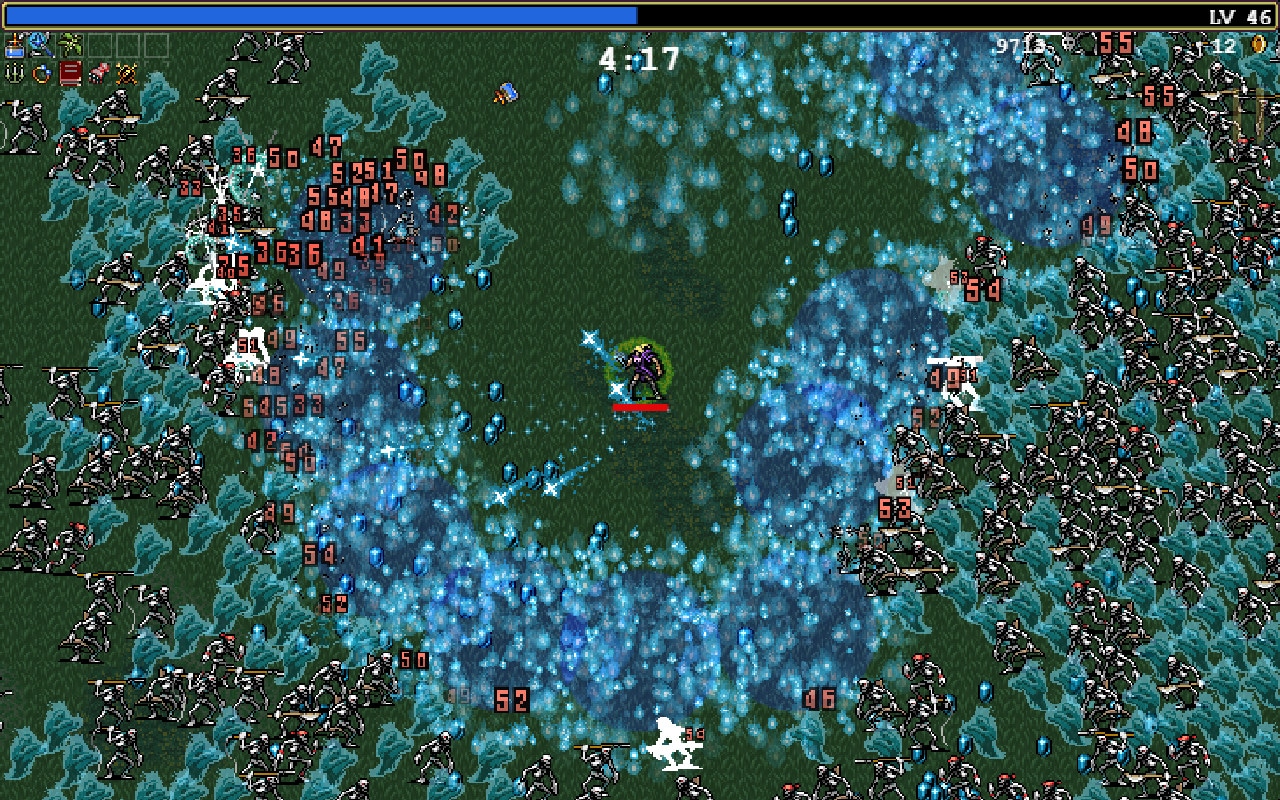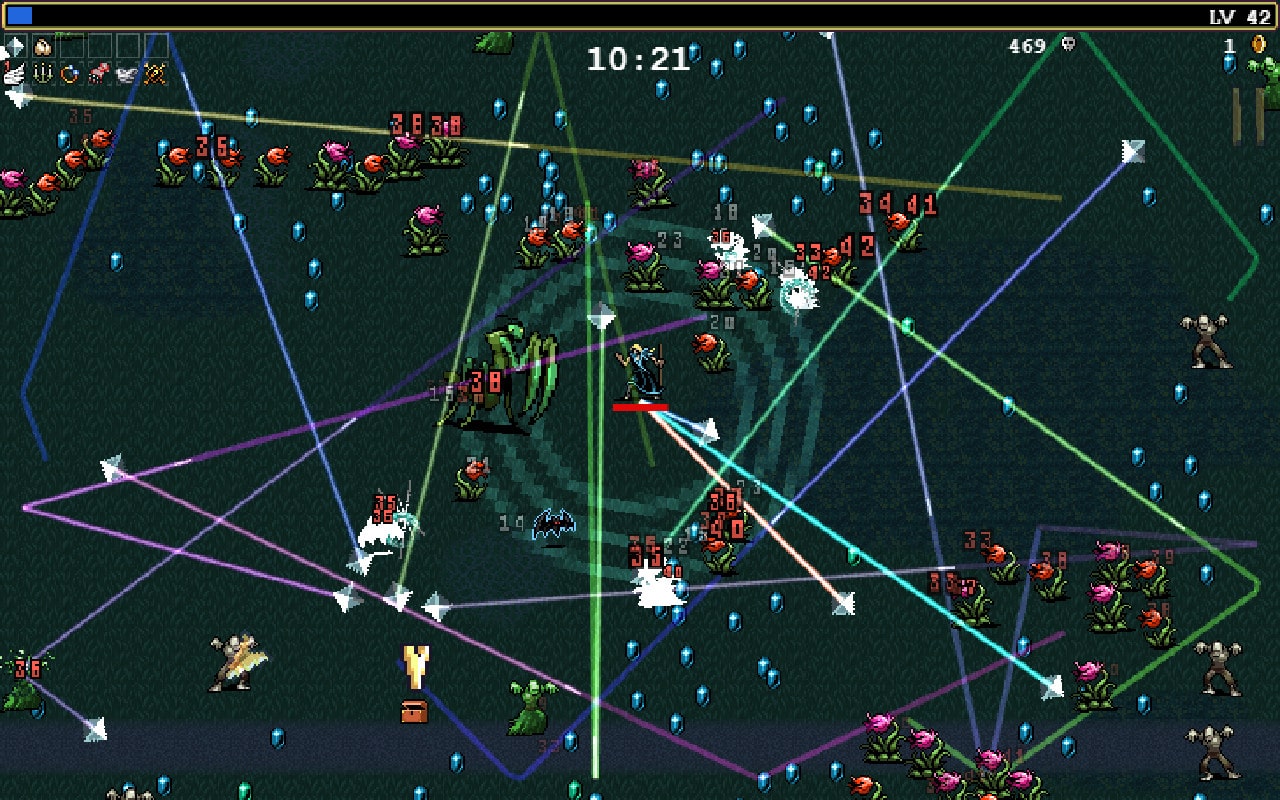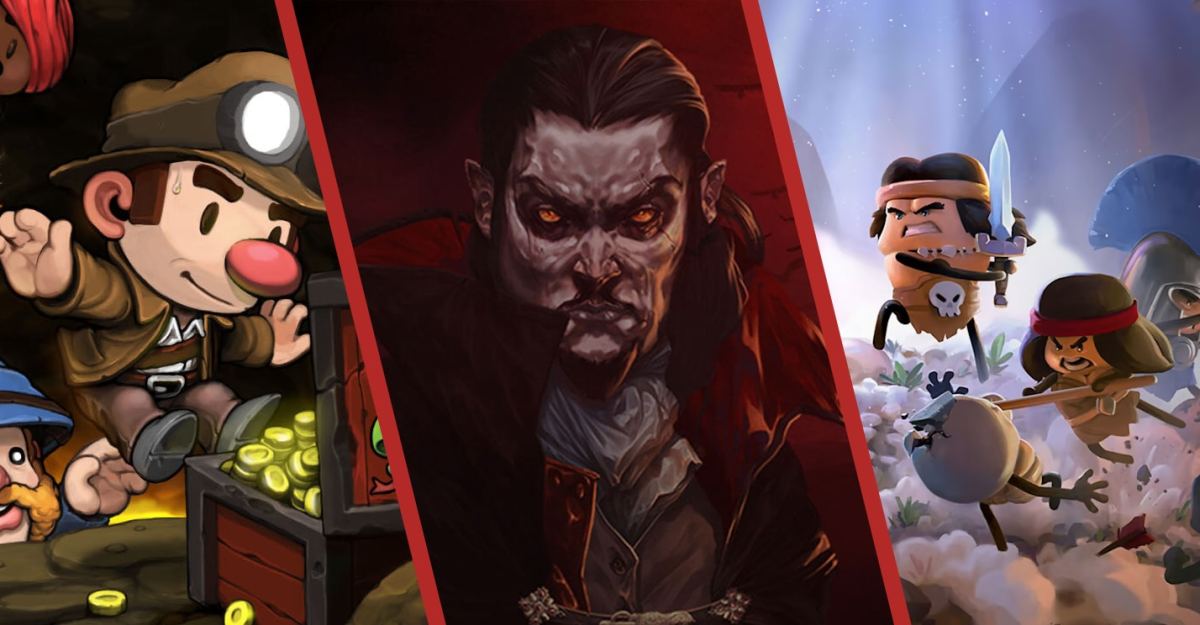Roguelites have an inherently tricky design problem to solve. They want you to play the first levels of the game over and over again without getting bored, and the way many roguelites deal with this is through item diversity. By having a variety of items or upgrades that affect the way you play, every run feels fresh even though you’re fighting the same enemies in roughly the same environments as last time.
When trying to make new items for roguelites, a good approach is to make an entirely different item with a new effect. For example, “You now spawn cats every time you attack,” versus “Your attacks bounce around the room,” provides a difference in kind: You can’t directly compare these things via numbers.
On the other hand, a more straightforward and cheap approach is to simply increase the numbers: +10 damage! +5 health! It’s tempting to look at these differences in scale as lazy, but really it’s just an extra tool in the roguelite designer’s toolbox that can be used well or poorly.
What determines whether a difference in scale feels meaningful to the player? Well, I’d argue that it has to change how you play.

Let’s look at the example of extra damage. In a game like Vampire Survivors, many levels for your weapons simply increase their base damage and area of effect. But since the game is entirely based around crowd control, these numbers change how you play the game.
An extra 5 damage can be the difference between taking two hits to kill a skeleton and taking one. Similarly, the area of effect changes how many enemies you can hurt in one attack – and therefore how well you can wipe out a large amount of enemies and clear a path to keep yourself safe.
On the other hand, it’s easy to make differences in scale essentially meaningless. In a game like The Elder Scrolls IV: Oblivion where every enemy scales in level alongside you, doing more damage while the enemies have more health feels exactly the same as doing less damage to less health.
Some roguelites fall victim to this trap, like Conan Chop Chop. It has you picking up weapons with higher damage numbers, but it also gives the enemies proportionally the same amount of health. So your weapon initially feels more powerful, but a few minutes later, the enemies are taking just as long to kill as before.
Other roguelite and roguelike games take a variety of approaches to avoid this item issue: Slay the Spire doesn’t scale your damage numbers up, but it does increase enemy health slowly. It provides you with a choice of items and card combos that will allow you to deal extra damage and make you feel clever for doing so.
Meanwhile, Spelunky doesn’t use differences in scale much at all. Yes, you can carry a shotgun that deals more damage than your whip. But you’ll have to carry it everywhere instead of the other items you find, and unlike your whip, it’s one of the few projectile weapons in the game.
Going Under uses item durability to allow more variance in its weapon power along with differences in kind. Sure, you’ll find a mega-powerful guitar that bounces away your enemies with sound, but after a bit of shredding, you’ll be back to hitting enemies over the head with a less powerful laptop.
There are a lot of approaches roguelites and roguelikes have used to keep differences in item scale interesting, but I want to circle back to Vampire Survivors because it does it so well. Like most games, it uses a mix of differences in kind (Do I want the axe or the whip?) and differences in scale. (My whip now does +5 damage.)

The game heavily centers on differences in scale. Once you’ve selected your handful of different items, all that’s left is to upgrade their numbers. The game keeps this interesting with a couple of tricks. For one, it allows the weapons to increase their number of projectiles. Strictly speaking, this is a difference in scale: more is better. But it often changes how you actually use the weapon. The whip’s even-numbered projectiles attack in the opposite direction, protecting your left and right no matter which way you face. Your axes and crosses will take slightly differing directions, covering more ground and making it advantageous to position yourself near a big group of enemies.
Then there are the items that buff your weapons. If you get the item that increases the size of projectiles, your crosses will wipe through swaths of the enemy, whereas the Runetracer might benefit from one that increases projectile speed and allows it to bounce around more.
Vampire Survivors overall is about numbers going up. You kill more enemies, get more health, do more damage, shoot more projectiles. But it makes it fun by both being well tuned and letting you go absolutely wild with power.
Roguelites aren’t competitive games that need to be perfectly balanced; they’re single-player experiences where getting more powerful is fun. If you’re going to include differences in scale in a roguelite, they should excite the player by changing how they play, or else you might be better sticking to differences in kind.






Published: Mar 2, 2022 11:00 am